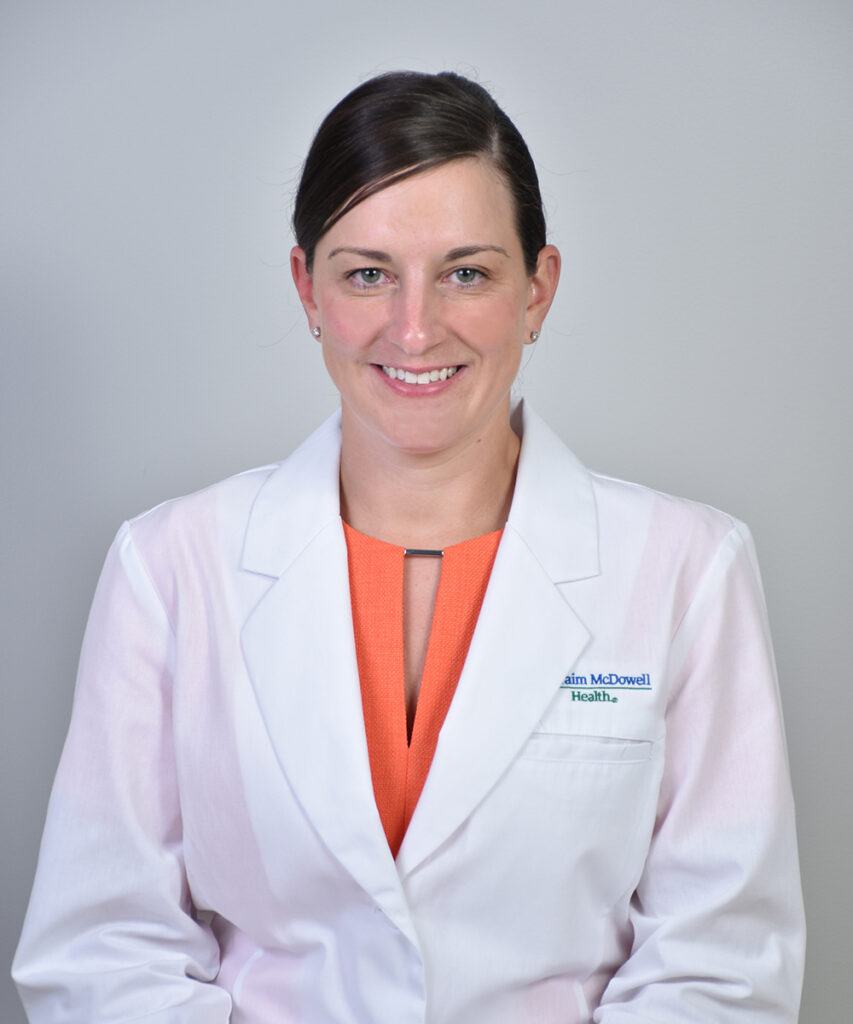
Ephraim McDowell Regional Medical Center announces that Dr. Katrina Kolasa, M.D., FACS, general surgeon, has completed her 500th procedure using the daVinci Surgical System. A celebration to observe that milestone was held today in the Surgical Services Department.
Dr. Kolasa, who is an independent contractor at Ephraim McDowell Central Kentucky Surgeons, began using the daVinci system on April 15, 2021. She offers a wide range of procedures with the system, including gallbladder removal, different types of hernia repairs, appendix removal, foregut procedures and colon and rectal procedures.
“I prefer the daVinci system for my patients because in many cases it can offer the opportunity to provide a safer surgery and that’s really what I care about most as a surgeon,” Dr. Kolasa said. “Patients come in all shapes and sizes, and with the daVinci system, visualization of target anatomy is terrific in almost any circumstance. This leads to more precise dissections and fewer complications.”
Ephraim McDowell Regional Medical Center has two daVinci Xi surgical systems that are used in the Surgical Services Department. The two systems are used for general surgery, bariatric, urology, thoracic, colorectal and foregut procedures. As of today, the systems have been used on nearly 4,000 cases.
The first daVinci surgical system at Ephraim McDowell Regional Medical Center was installed on March 27, 2017 as a result of an investment by the Ephraim McDowell Health Care Foundation. The Foundation was also instrumental in the purchase of the second system.
Dr. Kolasa said the daVinci surgical system has expanded her and her partners’ ability to provide safe and efficient minimally-invasive abdominal surgery, greatly decreasing risk of complication and recovery time for patients while also offering an alternative to a large “open” procedure.
“Most patients are very open to the idea of having their procedures done robotically,” Dr. Kolasa said. “Most realize right away that the robot isn’t actually ‘doing the surgery’. I have complete control during the entire operation. The robot should be seen just like any other tool used in surgery. It’s there to improve the experience for them and the surgeon.”
